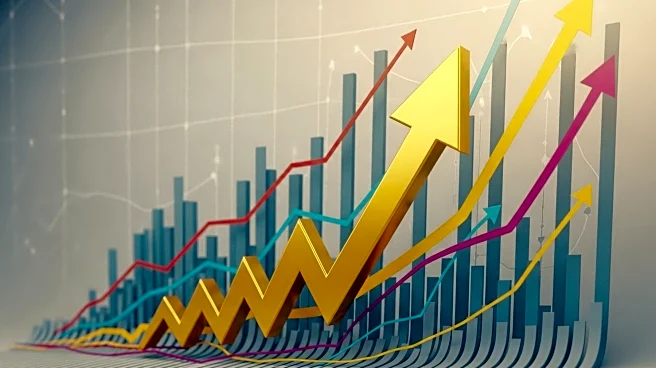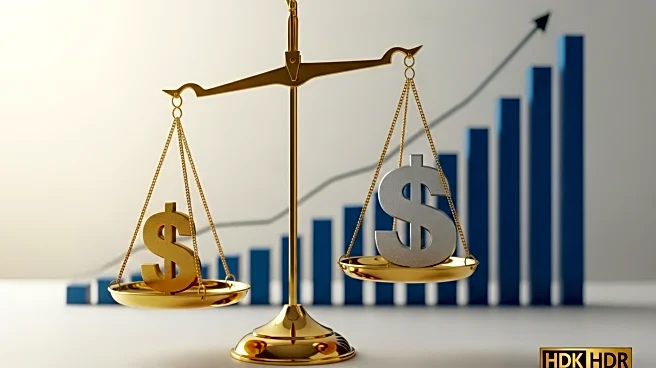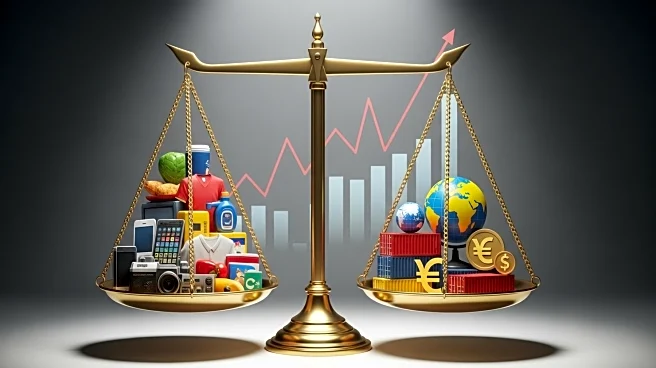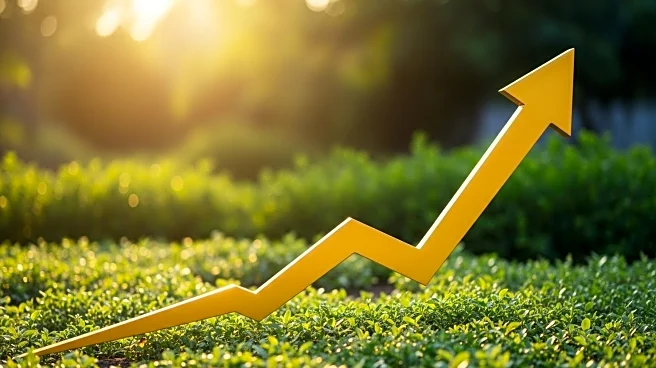What's Happening?
The U.S. economy experienced a significant rebound in the second quarter of 2025, with the gross domestic product (GDP) growing at a revised rate of 3.8%. This marks a substantial improvement from the initial estimate of 3.3% and follows a 0.6% decline in the first quarter. The Commerce Department attributes this growth to a decrease in imports, which fell at a 29.3% pace, and a rise in consumer spending, which increased by 2.5%. The first-quarter decline was largely due to a surge in imports as businesses rushed to stock up on foreign goods ahead of potential tariffs imposed by President Trump. The second quarter's growth was further supported by a 2.9% increase in a category measuring the economy's underlying strength, which includes consumer spending and private investment.
Why It's Important?
The revised GDP growth rate highlights the resilience of the U.S. economy amid trade uncertainties and fluctuating import levels. The increase in consumer spending suggests a robust domestic market, which is crucial for economic stability. However, the decline in private investment and federal government spending indicates potential vulnerabilities. The growth also comes at a time when the Federal Reserve is considering interest rate cuts to stimulate the job market, which has seen a slowdown in hiring. The strong GDP figures may influence the Fed's decision-making process, potentially reducing the likelihood of further rate cuts despite pressure from President Trump.
What's Next?
The Commerce Department is set to release its initial estimate of third-quarter GDP growth on October 30, with forecasters predicting a slowdown to an annual pace of 1.5%. The Federal Reserve's upcoming decisions on interest rates will be closely watched, as they balance the need to support job growth with the implications of a stronger-than-expected economy. Businesses and policymakers will also be monitoring the impact of trade policies and tariffs on future economic performance.










